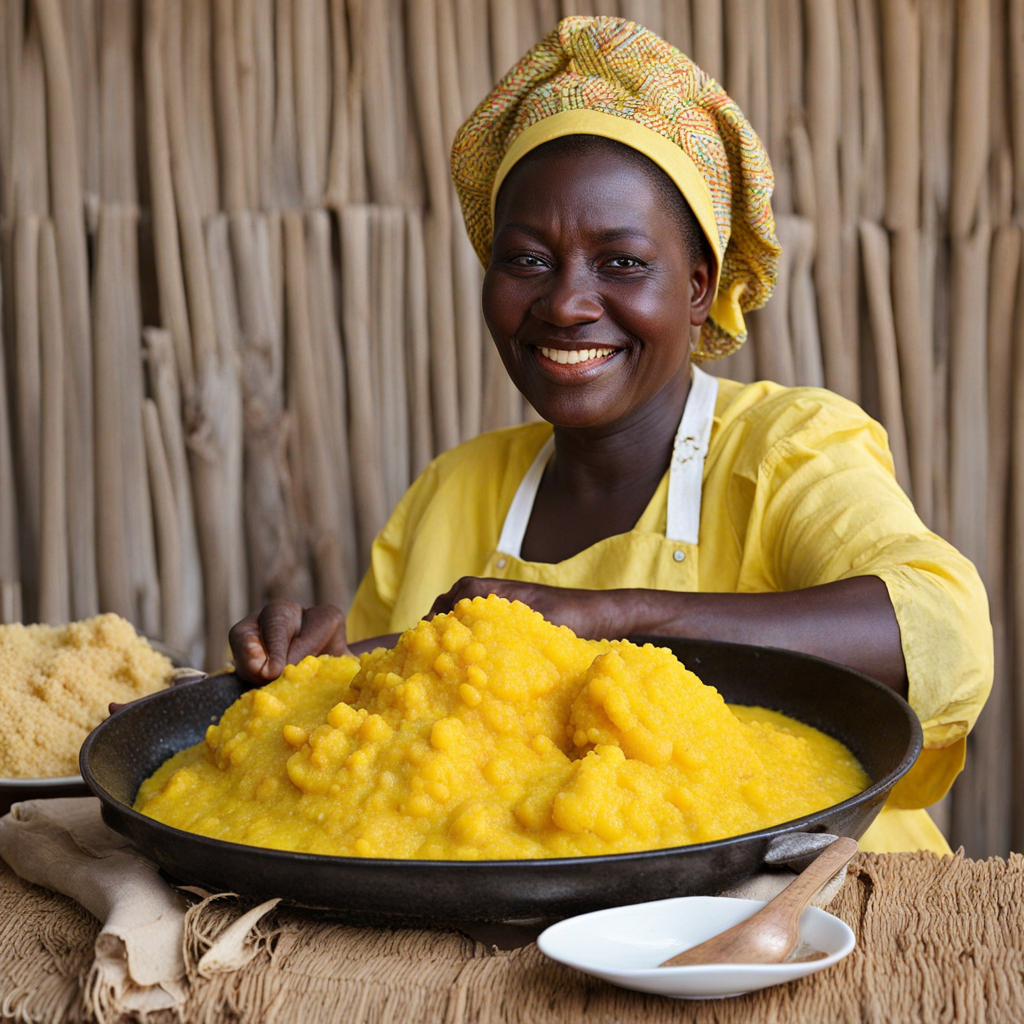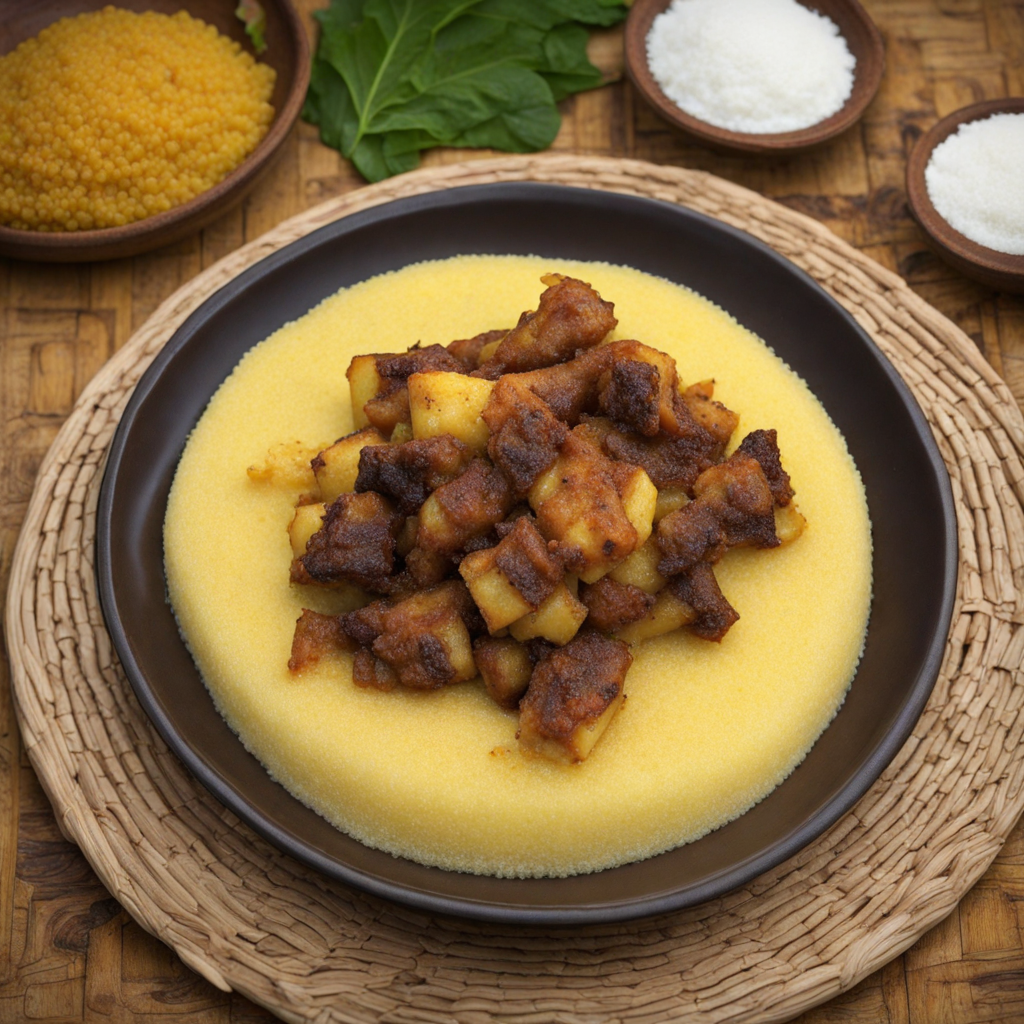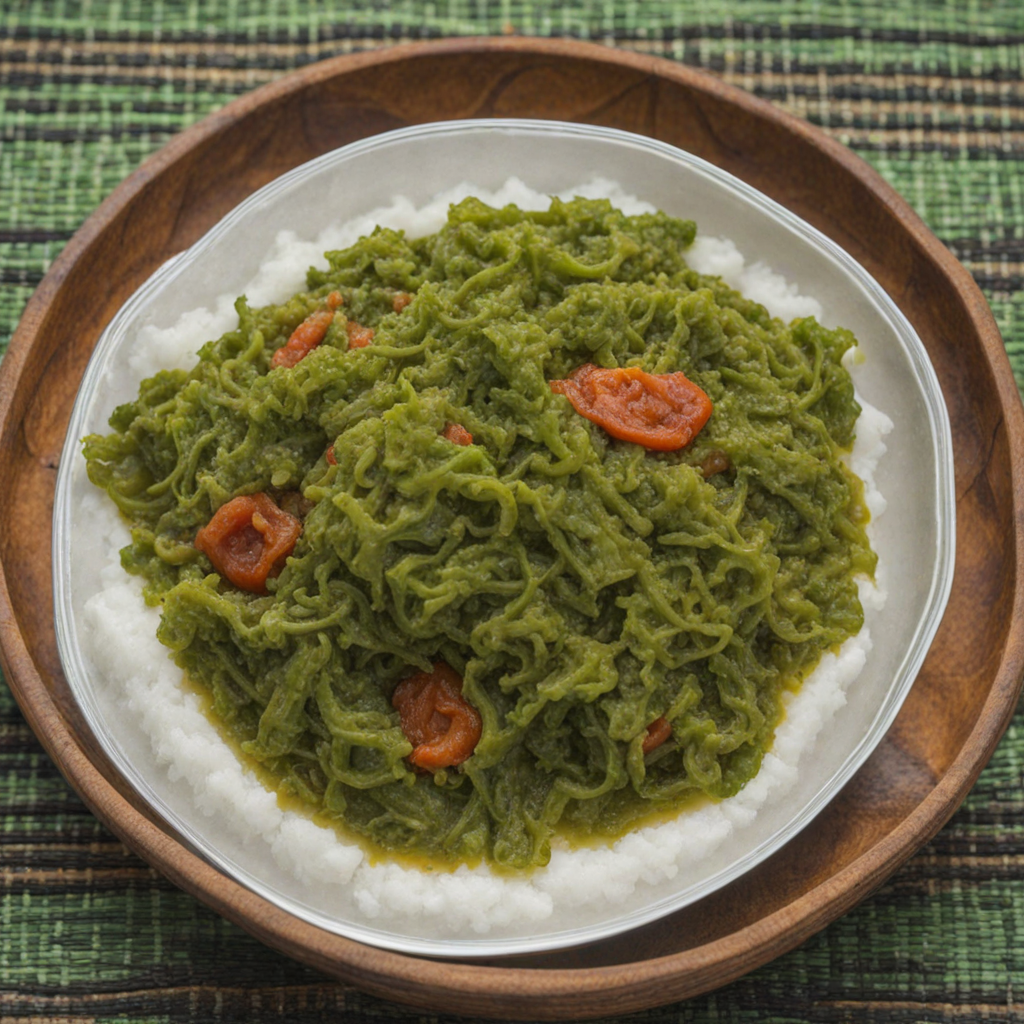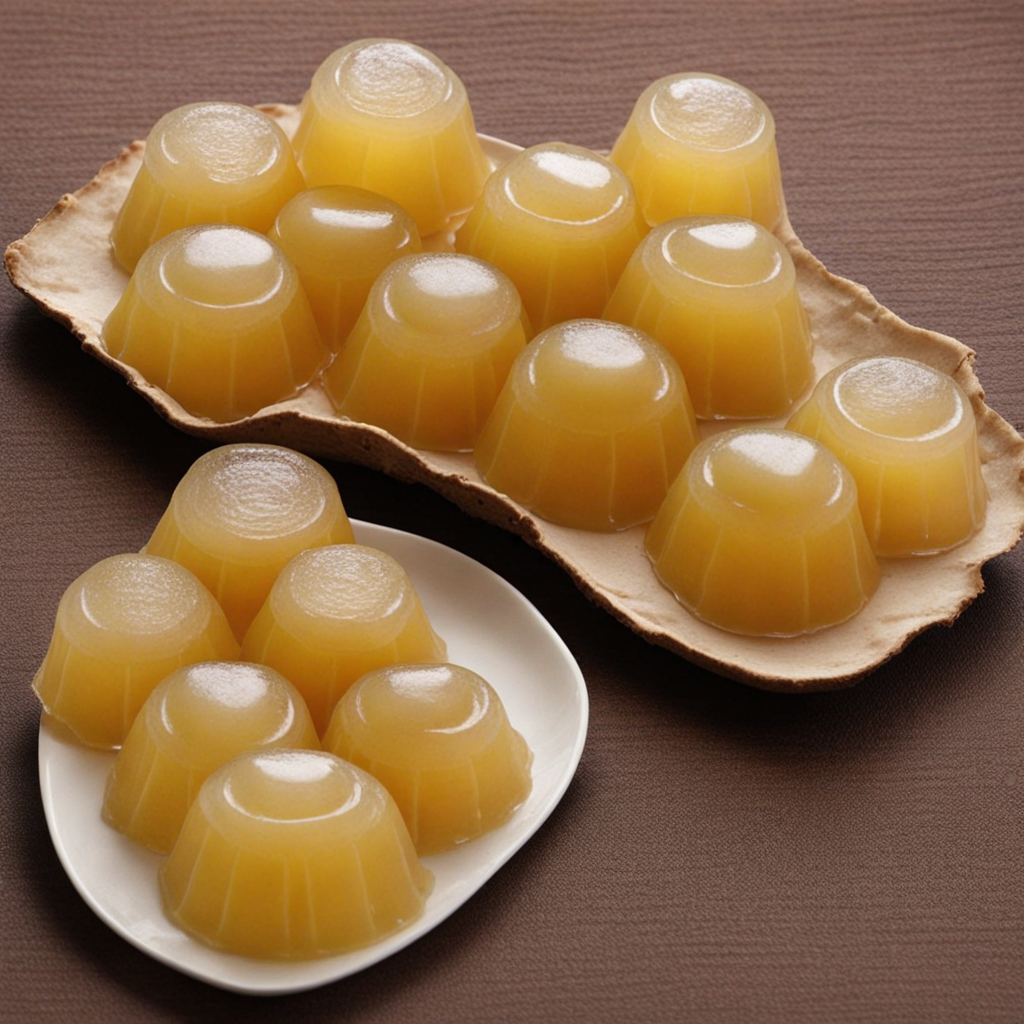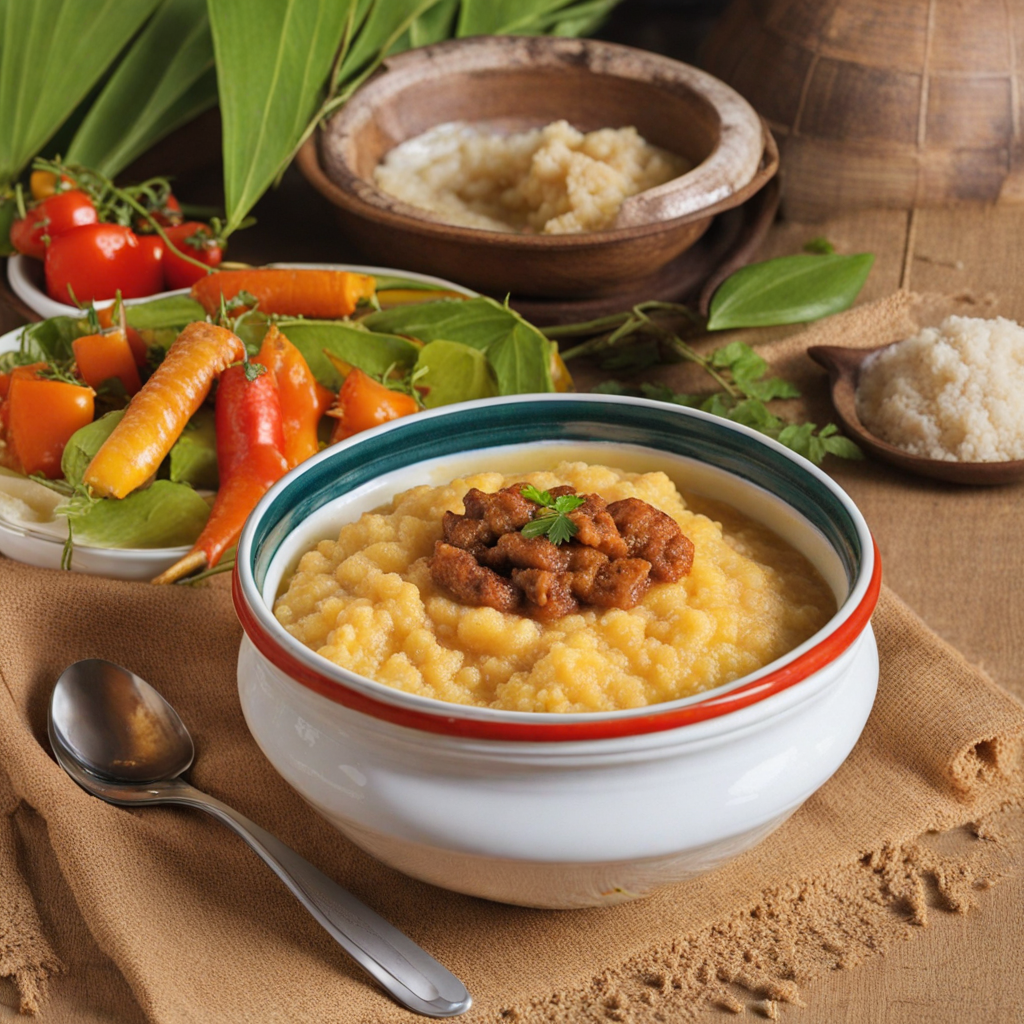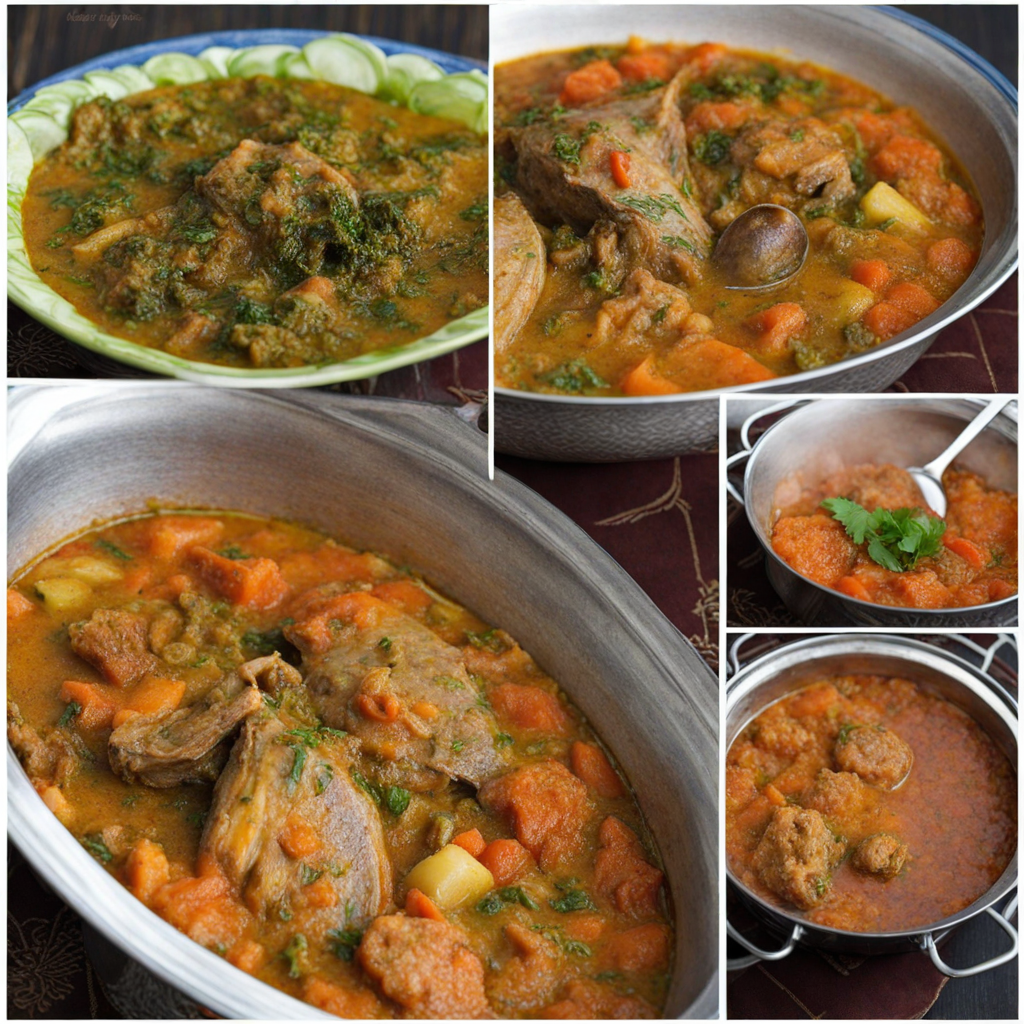Funge
Funge is a traditional Angolan dish that embodies the country's rich culinary heritage and is a staple in many households. This unique dish is primarily made from cornmeal or cassava flour, which is cooked to create a thick, dough-like consistency. The texture is smooth and slightly elastic, making it an excellent accompaniment to a variety of stews and sauces. Funge is typically served in a round shape, often sliced or molded into portions, and is enjoyed for its ability to soak up flavors from the accompanying dishes, making every bite a delightful experience. One of the most appealing aspects of funge is its versatility. It can be paired with a myriad of flavorful Angolan sauces, such as muamba de galinha (chicken stew) or caldeirada (fish stew), both of which offer a symphony of spices and ingredients that enhance the overall taste of the meal. The beauty of funge lies in its ability to complement both meat and vegetable dishes, providing a blank canvas that allows the vibrant flavors of Angolan cuisine to shine through. The dish is often enjoyed communally, with diners using their hands to tear off pieces of funge and dip them into the accompanying stews, adding an interactive and communal aspect to the dining experience. In addition to its deliciousness, funge also holds cultural significance in Angola, symbolizing unity and tradition. It is often prepared during family gatherings and celebrations, reinforcing bonds between loved ones as they share a meal together. The preparation of funge can also be a social occasion, with family members coming together to create this beloved dish. For those looking to explore new flavors, funge offers a taste of Angola’s rich culinary traditions, inviting you to experience the warmth and hospitality that is at the heart of Angolan culture.
How It Became This Dish
Funge: A Culinary Journey Through Angolan Tradition Funge, a staple dish from Angola, is more than just a meal; it embodies the rich tapestry of Angolan culture, history, and communal life. This simple yet nourishing dish has roots that stretch back through the annals of Angolan history, reflecting the influences of indigenous practices, colonial encounters, and contemporary culinary evolution. Origins of Funge The origins of funge can be traced to the early inhabitants of Angola, particularly the Bantu-speaking peoples who settled in the region thousands of years ago. These communities cultivated cassava, a key ingredient in funge, which has been a dietary staple in many parts of Africa. The process of making funge involves boiling cassava flour with water to create a thick, dough-like consistency, similar to that of polenta. The preparation of funge is an art passed down through generations. Traditionally, it is made with cassava flour, but variations exist that include maize flour or even a mix of both. The dish is typically cooked in a large pot, stirred continuously to prevent lumps, and is often served with various sauces or stews. This communal method of preparation not only fosters a sense of togetherness but also highlights the importance of shared culinary practices in Angolan society. Cultural Significance Funge holds a special place in Angolan culture. It is often associated with family gatherings, celebrations, and communal feasts. In Angolan households, funge is more than just a dish; it is a symbol of hospitality and unity. It is often prepared in large quantities to cater to family and friends, reinforcing the values of sharing and community. The dish is typically served with a variety of accompaniments, such as meats, fish, or vegetable stews, creating a balance of flavors and nutrients. The versatility of funge allows it to be adapted to different occasions and preferences, making it a beloved staple across various regions of Angola. Funge is also embedded in the social fabric of Angolan life. It is commonly found at important events such as weddings, funerals, and religious ceremonies. The act of sharing funge during these significant times enhances the bonds between individuals and reinforces cultural traditions. Additionally, the dish serves as a conduit for storytelling, as families pass down recipes and cooking techniques that carry the weight of history and identity. Colonial Influences and Evolution The Portuguese colonization of Angola, which began in the late 15th century, introduced new ingredients and culinary techniques to the region. This period significantly impacted the way funge was prepared and consumed. The Portuguese brought with them a variety of spices, meats, and cooking methods that would eventually blend with indigenous practices. As a result, funge began to evolve. While the traditional method of preparation remained largely unchanged, the incorporation of new flavors and ingredients from Portuguese cuisine enriched the dish. Ingredients such as tomatoes, onions, and various spices became common accompaniments, giving rise to a fusion of flavors that characterized Angolan cuisine. The Angolan civil war, which lasted from 1975 to 2002, further influenced the preparation and consumption of funge. During this tumultuous period, access to food became limited, and many families had to adapt their recipes based on the availability of ingredients. As a result, funge became a symbol of resilience and resourcefulness, as families found ways to maintain their traditions in the face of adversity. Modern Interpretations Today, funge continues to be a fundamental part of Angolan cuisine, though its preparation and presentation have evolved. In urban areas, where access to diverse ingredients is more prevalent, chefs are experimenting with new recipes and techniques. Gourmet versions of funge can be found in upscale restaurants, where chefs fuse traditional elements with contemporary culinary practices, creating dishes that appeal to a modern palate. The global diaspora of Angolans has also contributed to the evolution of funge. As Angolan communities spread across the world, they brought their culinary heritage with them, leading to the creation of fusion dishes that incorporate funge into a variety of international cuisines. This global adaptation ensures that funge remains relevant and accessible, even far from its homeland. Funge in Contemporary Society In contemporary Angola, funge remains not only a staple food but also a point of national pride. It is often featured in culinary festivals and cultural events, celebrating Angolan heritage and identity. The dish is a source of nostalgia for many Angolans, evoking memories of home, family gatherings, and communal celebrations. Moreover, funge has become a symbol of Angolan resilience. In a country that has faced numerous challenges, including colonialism, civil war, and economic struggles, the continued popularity of funge reflects a collective spirit and determination to preserve cultural identity. It serves as a reminder of the strength and unity of the Angolan people, bridging the past with the present. Conclusion Funge is more than just a dish; it is a living testament to the history, culture, and resilience of the Angolan people. From its origins in the ancient practices of Bantu-speaking communities to its contemporary interpretations in urban culinary scenes, funge embodies the richness of Angolan heritage. As both a staple food and a symbol of community, funge continues to nourish not only the body but also the spirit, fostering connections among families and friends across generations. In every bite of funge, one can taste the history of Angola—its struggles, its triumphs, and, most importantly, its enduring spirit.
You may like
Discover local flavors from Angola


